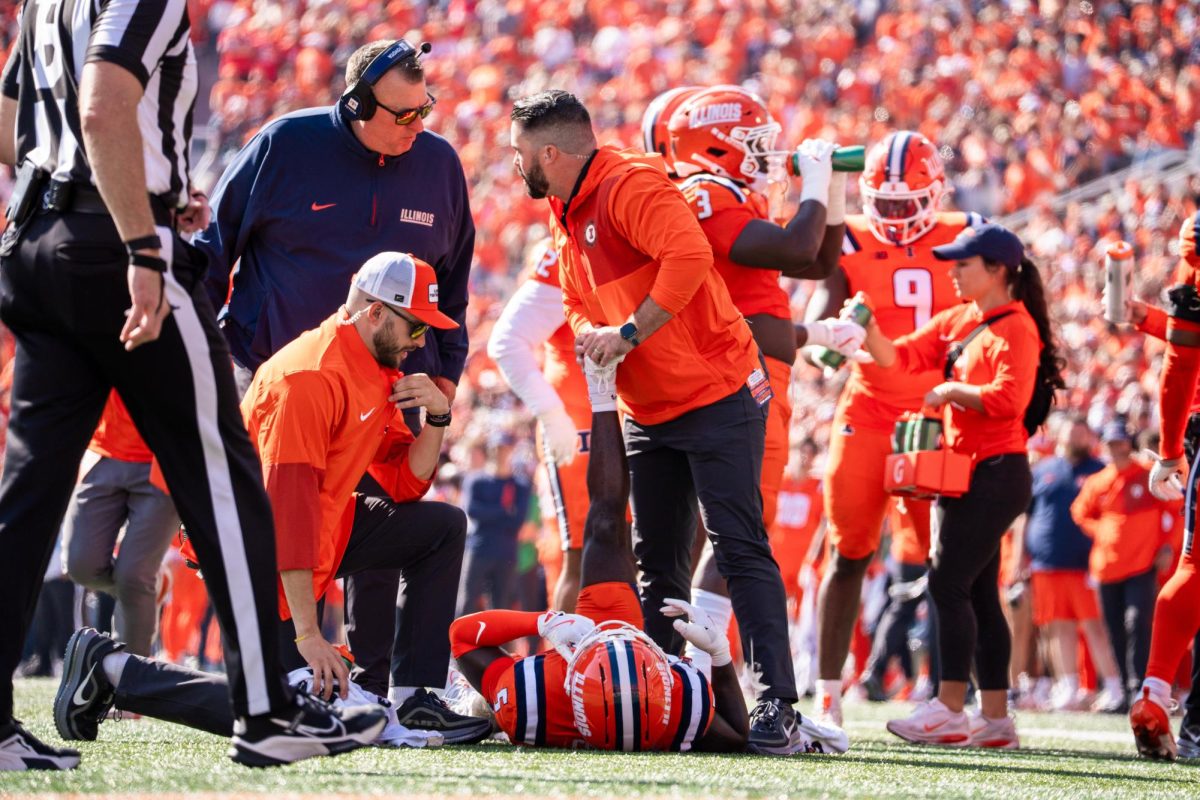A mid-19th century cabin’s trapdoor cellar is not a common find on a bike path.
But that’s what the Illinois State Archaeological Survey at the University, or ISAS, found after conducting a standard protocol survey of a proposed area for Urbana bike path.
The excavation took place on a 40-acre property that once belonged to Fountain J. Busey, a pioneer and farmer who came to Urbana in 1829. Ian Fricker, assistant district archaeologist of ISAS, said after testing 32,000 square feet of the property, his five-person team found, along with a cellar, a refuse pit, a well and a single post-mold from where a fence post used to be.
“When you begin excavating any site, you don’t know what you’ll find,” Fricker said. “As you expose more features the site begins to take on shape. Eventually, you know that you’re standing in the middle of a farm, or a prehistoric village. That process of discovery is what I enjoy the most.”
The artifacts were found on a piece of land where the city of Urbana plans to construct an $800,000 2-mile long, 8-foot wide bike path, starting on the west side of High Cross Road. This stretches from University Avenue, also known as U.S. Route 150, to Windsor Road. It will include a steel pedestrian truss bridge and is anticipated to connect with other paths through Urbana, Champaign, the Vermillion County entrance and eventually to Kickapoo State Park.
Get The Daily Illini in your inbox!
Artifacts found at the site included broken crockery, china, glassware, bricks, nails and even a cow bone.
Mark Branstner, historic and cultural resource archaeologist, said the property was later owned by Busey’s father; but the cabin did not represent his father’s wealth, and was probably occupied by a tenant or farmhand.
He said the cabin itself is estimated to have been occupied somewhere between 1845 and 1870.
“At that point, they probably tore down the farmstead and converted it back to agriculture,” Branstner said. “Whatever garbage was laying around on the surface of the site at that time got incorporated back into those holes as fill and that’s what we’re finding.”
Craig Shonkwiler, High Cross Road bike path project manager, said during his career he has never encountered a historical site such as this one during a survey.
“Without this project it would have been highly likely that we would have not found this site,” Shonkwiler said. “When it’s found, it’s very important to let the archaeologists get in and preserve history.”
Fricker said the artifacts will be added to the ISAS research collection.
ISAS is in the process of analyzing the artifacts and writing a report so the bike path will be clear to continue.
Shonkwiler said the bike path’s construction will take place throughout most of summer 2011.





